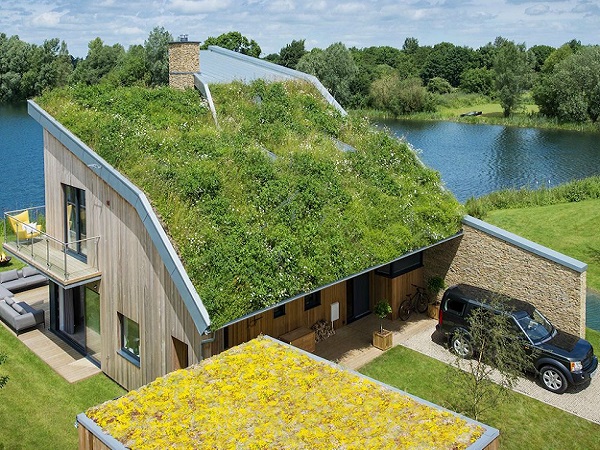From the moment we design a home to the moment we hand over the keys to your new home, most of us are now committed to ensuring that the construction and operation of its developments are sustainable. And that, in the future, the impact on the environment continues to be minimal.
But, if we live in sustainable homes, let’s take this philosophy a step further. To do this, we propose these ten sustainable ideas for the home.
Consume with Awareness: The Circular Economy
When you consume, ask yourself the following questions:
– Do I really need it? If the answer is no, don’t buy it. This is the best way to save money at home.
– Where does the product come from? Costs such as refrigeration and packaging not only have a negative effect on the environment, but also increase the price. Buy local.
– Do I buy from ethically responsible companies? Let’s also try to contribute indirectly to sustainable development.
Give a Second Chance: Recycle
Make sure you buy products that can be reused or recycled and, of course, take care to do so afterwards so that your commitment to environmental sustainability is complete.
Things can have multiple lives, even for new sustainable buildings, we already have recycled building materials that are increasingly versatile.
Eat Healthy: Think Green
One of the most effective ways to reduce our ecological footprint is to incorporate more vegetables into our diets, and ideally we should grow our own garden for self-consumption. But every little bit helps, perhaps a few herbs, a few tomato plants, and also flowers that are not only decorative, but also attract pollinators like bees. Preserving the endemic species of our flora is also essential.
Artificial is Not in Fashion: Say Goodbye to Plastics
About three hundred million tons of plastic are produced each year, of which less than 10% is recycled. The rest ends up in landfills, abandoned in nature or sailing in our rivers and seas.
Switch to other more versatile or biodegradable materials, buy products in bulk, use reusable bags, plan for sustainable decoration in your home, etc.
Home Office: Forget the Paper
More and more of us work from home, and the home and office are more integrated. But wherever we work, let’s try to eliminate all paper correspondence and mark our mailboxes as not accepting advertising brochures.
Let’s get used to digital information management and, if it is absolutely necessary to use paper, let’s recycle, recycle, recycle.
Measuring and Controlling: Reducing Electricity Costs
Air conditioning and hot water systems tend to have the greatest impact on electricity consumption. Aerothermal systems are a solution of great comfort and low consumption.
But if your home is not built to sustainable parameters, the first thing to do is to measure its energy efficiency.
To reduce the cost of electricity, the use of natural light is effective, both for lighting and for regulating the temperature of the house. If artificial lights must be used, always with low consumption.
A good option is also to take advantage of sunlight by installing photovoltaic panels that capture the radiation of solar energy, a 100% renewable energy, and convert it into electrical energy.
Trust home automation. It can help you program your home’s electricity consumption according to real needs, to avoid excessive expenses.
Appliances: Choosing Correctly
When it comes to household appliances, there are two aspects to consider: their energy efficiency and their lifespan. On the one hand, it is important to know which are the most efficient appliances that will allow us to save on electricity consumption in our home. On the other hand, we also need to think about the amount of hazardous waste that is generated every time we dispose of an appliance.
And don’t forget that if you finally have to get rid of an appliance, you have to take it to a collection point or to a cleaning point.
So what are your thoughts on those tips? Let us know in the comments below.
